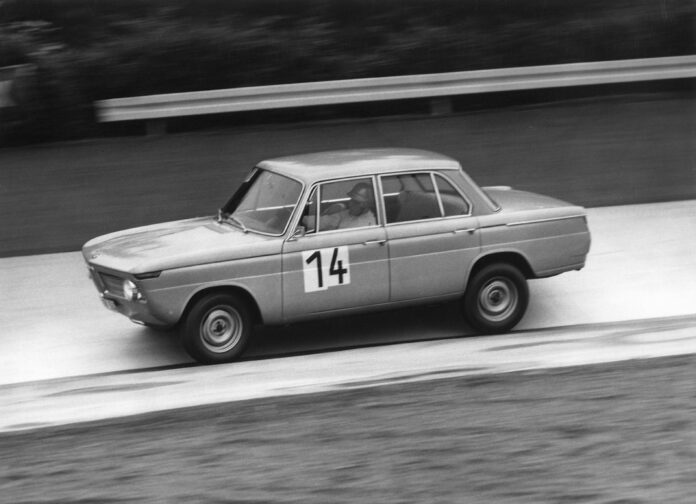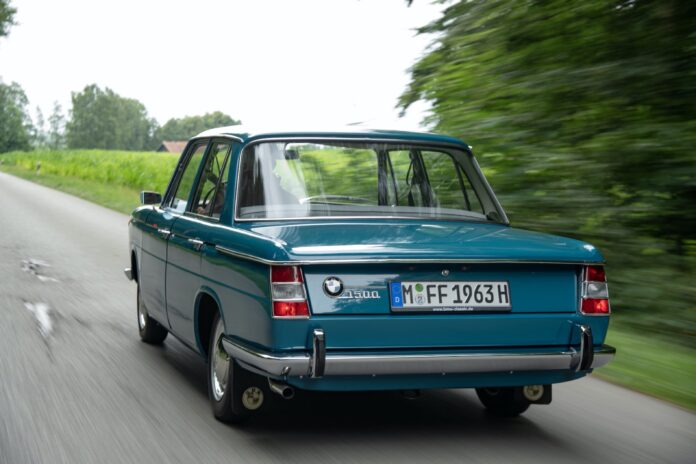The original “New Class” – The BMW 1500

BMW’s big goal in the coming years is the introduction of the so-called “New Class”, which is scheduled to come onto the market in 2025 with the next generation of the electric 3 Series. The “Neue Klasse” first appeared in the early 1960s and expectations of it were similarly high back then. It marked the Bavarian car manufacturer’s final ascent into the premium segment.
BMW’s future plans focus almost exclusively on the New Class. Unveiled with the new 3 Series, it is intended to be more than just a single car, but rather a new platform with the latest battery technology, advanced driver assistance systems and a modular structure that enables a variety of body variants. Sedans, station wagons, coupes, convertibles and SUVs – all with different wheelbases and track widths – comprise this new class and possibly more.
When the BMW 1500, the first model of the original Neue Klasse, celebrated its world premiere at the Frankfurt IAA in autumn 1961, the interest of visitors was enormous. This new mid-range model from Munich was a game-changer that hardly anyone had expected before. For BMW, the 1500 marked the beginning of a new future, as the company had great ambitions to become a real alternative to Mercedes: focused on design, coupled with a significant portion of dynamism. Technically speaking, the BMW 1500 was a joy, and it looked it too. The car did not have a prestigious six-cylinder in-line engine, but rather a four-cylinder in-line engine with 55 kW/75 hp, a five-bearing crankshaft and an overhead camshaft. The chassis of the mid-range car, which weighed just under a ton, had front spring struts, angled trailing arms at the rear and front disc brakes, which ensured effective deceleration from a top speed of 150 km/h. The design had more than a touch of Italian flair, similar to the BMW 3200 CS, which was powered by a powerful V8 engine.
The BMW 1500 came at the perfect time, as Germany was coming out of the war and experiencing increasing economic success and its citizens were enjoying growing purchasing power. For the first time, over a million new vehicles were registered in Germany every year and the demand for larger vehicles was greater than ever before. With a minimum price of 9,500 German marks, the BMW 1500 was the right car for the time. Previously, BMW had also offered models such as the small 700 in addition to the gigantic “Baroque Angel”. The Neue Klasse was therefore a programmatic statement after high-profile but small-volume models such as the BMW 503/507 had ceased production at the end of the 1950s and BMW had narrowly avoided being taken over by Daimler. What was missing for economic revival was the right car: the 1500.

Customer interest in the mid-range car, initially referred to internally as a “medium-sized car”, was great and led to around 25,000 pre-orders for the new model by the beginning of 1962. The then BMW design chief Wilhelm Hofmeister consulted Giovanni Michelotti for the design. After the world premiere, there were some minor design changes and an increase in performance to 59 kW/80 hp through slightly increased compression. Driving in the BMW 1500 showed that the four-door mid-range sedan not only offered generous interior space and a large trunk, but also moved quite quickly thanks to a curb weight of around 950 kilograms. In the early 1960s, only smaller models from England or Italy offered such driving fun, but not a German mid-range sedan, which also shone with its slightly Italian-inspired design. Despite all its sporty elegance, the 1500 was more economical than most of its competitors. The 53 liter fuel tank enabled a range of around 500 kilometers and still achieved a top speed of 150 km/h.
Not only the engine, but especially the driving behavior set new standards in the middle class. Head of development Fritz Fiedler and head of testing Eberhard Wolff were responsible for combining for the first time a strut front axle with longitudinally mounted rear wheels that were 14 inches instead of the originally planned 13 inches. Anyone who values spirited driving will still appreciate it today.

It was therefore hardly surprising that the Neue Klasse quickly made the leap into motorsport. In 1963, the BMW 1500 developed into a family of increasingly sporty vehicles with the more powerful siblings 1800 and 1800 ti. Above the 90 hp BMW 1800, the 1800 ti was positioned for particularly demanding customers, especially abroad.
Thanks to increased compression to 1:9.5, two Solex double carburettors, larger intake valves, stiffer valve springs, a camshaft with extended valve timing and higher cams, the top model produced 81 kW/110 hp at 5800 rpm. A larger, ribbed aluminum oil pan with a capacity of five liters ensured good oil cooling – ideal conditions for entry into touring car racing. The BMW 1800 TISA was developed specifically for motorsport and was equipped with bucket seats, an adjustable sports suspension, a five-speed gearbox, a 105-liter fuel tank and an increase in power to 96 kW/130 hp, allowing it to reach a speed of 192 km/h. H. Sales were limited to licensed sports car drivers. For BMW, the Neue Klasse of the 1960s was a monumental success. Munich is also hoping for a similar result from the new generation of electric vehicles, which is scheduled to premiere in just under two years.


